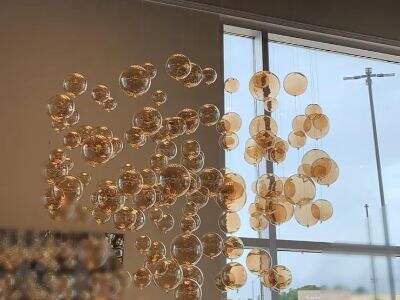Waarom de Positionering van Binnenlampen de Schaduwbeheersing Beïnvloedt
Indoor sconces zijn een flexibel designelement dat grote invloed kan hebben op het uiterlijk en de sfeer van een kamer. Deze armaturen worden meestal op de muur gemonteerd en zorgen zowel voor ambientverlichting als accentverlichting. Positionering is één van de belangrijkste aspecten die moet worden overwogen bij het kiezen en plaatsen van muursconces, omdat zij bepalen hoe het licht in een ruimte wordt verdeeld en hoeveel schaduw er ontstaat.
Hoe de plaatsing van sconces licht en schaduw beïnvloedt
Het is noodzakelijk te weten wat het effect is van de plaatsing van een binnenwandlamp op de richting van het licht en het schaduwgebied om perfecte verlichting te creëren. Op strategische plaatsen geplaatste wandlampen kunnen gebruikt worden om de sfeer van de ruimte te versterken en zelfs gunstig licht uit te breiden naar buiten gelegen onderdelen van de ontspanning. Met andere woorden, wandlampen die boven een leunstoel zijn gemonteerd, kunnen gebruikt worden om voldoende verlichting te bieden zonder scherpe schaduwen te veroorzaken. Wandlampen die daarentegen te hoog of te laag zijn geïnstalleerd, kunnen onhandige schaduwen veroorzaken en zo ervoor zorgen dat een kamer donker en onvriendelijk overkomt.
Controle van licht en schaduw via strategische plaatsing
De positie van muurlampen is centraal bij het definiëren van de verhouding tussen licht en schaduw. Het plaatsen van muurlampen op plekken waar ze het meest nuttig zijn, kan veel bijdragen aan de functionaliteit en sfeer van een ruimte. Een voorbeeld hiervan is het aanbrengen van muurlampen aan weerszijden van een spiegel om een flatteus licht te creëren voor het aanbrengen van make-up of scheren, met name in gebieden met weinig natuurlijk licht. Muurlampen die daarentegen te ver van elkaar geplaatst zijn, veroorzaken onflatteuze schaduwen, wat ongunstig is voor doelgerichte activiteiten. Schaduw kan worden geoptimaliseerd binnen een zorgvuldig verlichtingsontwerp, waarbij aan de plaatsing van de muurlampen serieus aandacht wordt besteed.
Vermijden van Harde Schaduwen Door Zorgvuldige Plaatsing
In de muur gemonteerde wandlampen kunnen ernstige en lelijke schaduwen veroorzaken. De plaatsing van wandlampen ten opzichte van meubilair en decoratie moet eveneens in overweging worden genomen om het ontstaan van ongewenste schaduwen te verminderen. Een ander aspect dat bij het opstellen van een verlichtingsplan moet worden meegenomen, is de interactie van de wandlampen met de andere objecten in de ruimte. In één voorbeeld kunnen wandlampen die te dicht bij kunstwerken zijn geplaatst, schaduwen werpen die afleiden van het kunstwerk. Met behulp van een dergelijke positionering van wandlampen is het mogelijk om het effect van volledig licht te creëren zonder lelijke schaduwen rond meubels en accenten.
Het kan interessant zijn om te experimenteren met de kunst van schaduwcontrole door doelbewust wandlampen te plaatsen. Je kunt ook experimenteren met het plaatsen van de lampen in verschillende posities en onder verschillende hoeken om ervoor te zorgen dat je de beste verlichtingsconfiguratie hebt in jouw ruimte.




 EN
EN
 AR
AR
 BG
BG
 HR
HR
 NL
NL
 FI
FI
 FR
FR
 DE
DE
 EL
EL
 HI
HI
 IT
IT
 JA
JA
 KO
KO
 NO
NO
 PL
PL
 PT
PT
 RO
RO
 RU
RU
 ES
ES
 SV
SV
 TL
TL
 ID
ID
 SL
SL
 UK
UK
 VI
VI
 GL
GL
 HU
HU
 TH
TH
 TR
TR
 MS
MS
 GA
GA
 CY
CY
 EO
EO
 LA
LA
 MN
MN
 NE
NE
 SO
SO
 UZ
UZ
 HAW
HAW
 LB
LB
